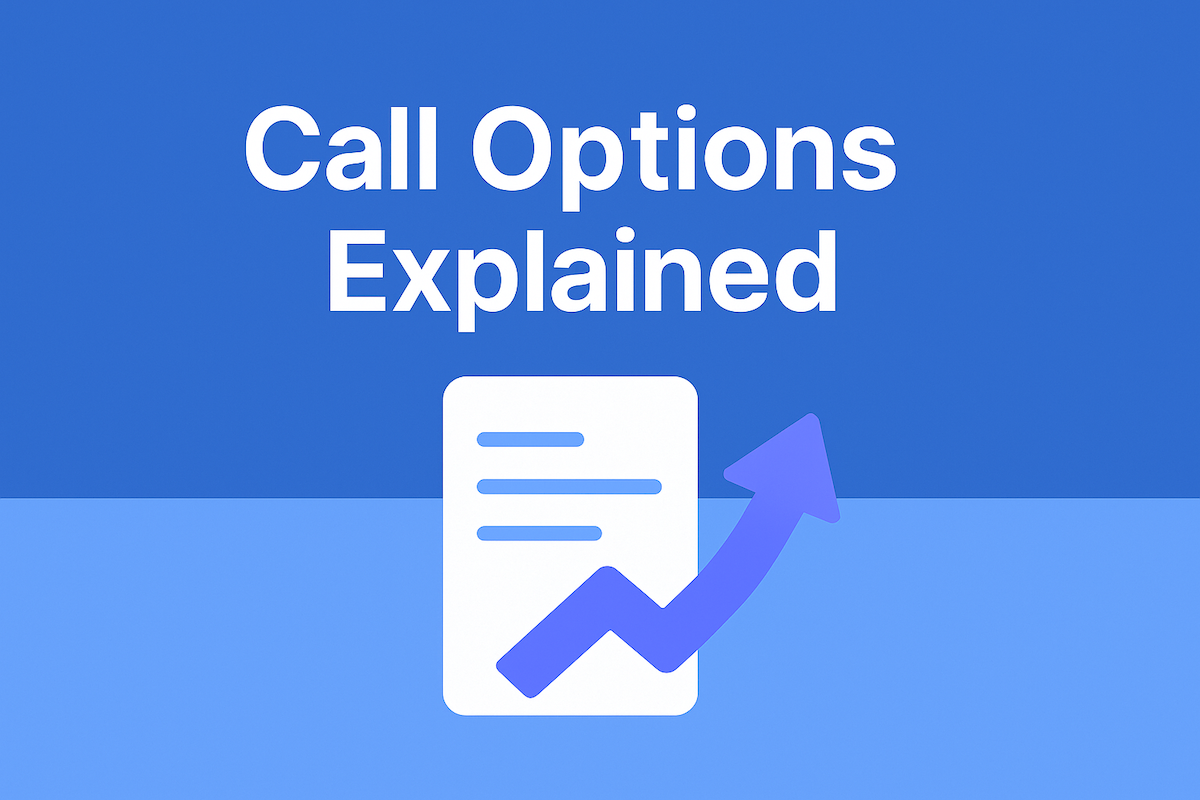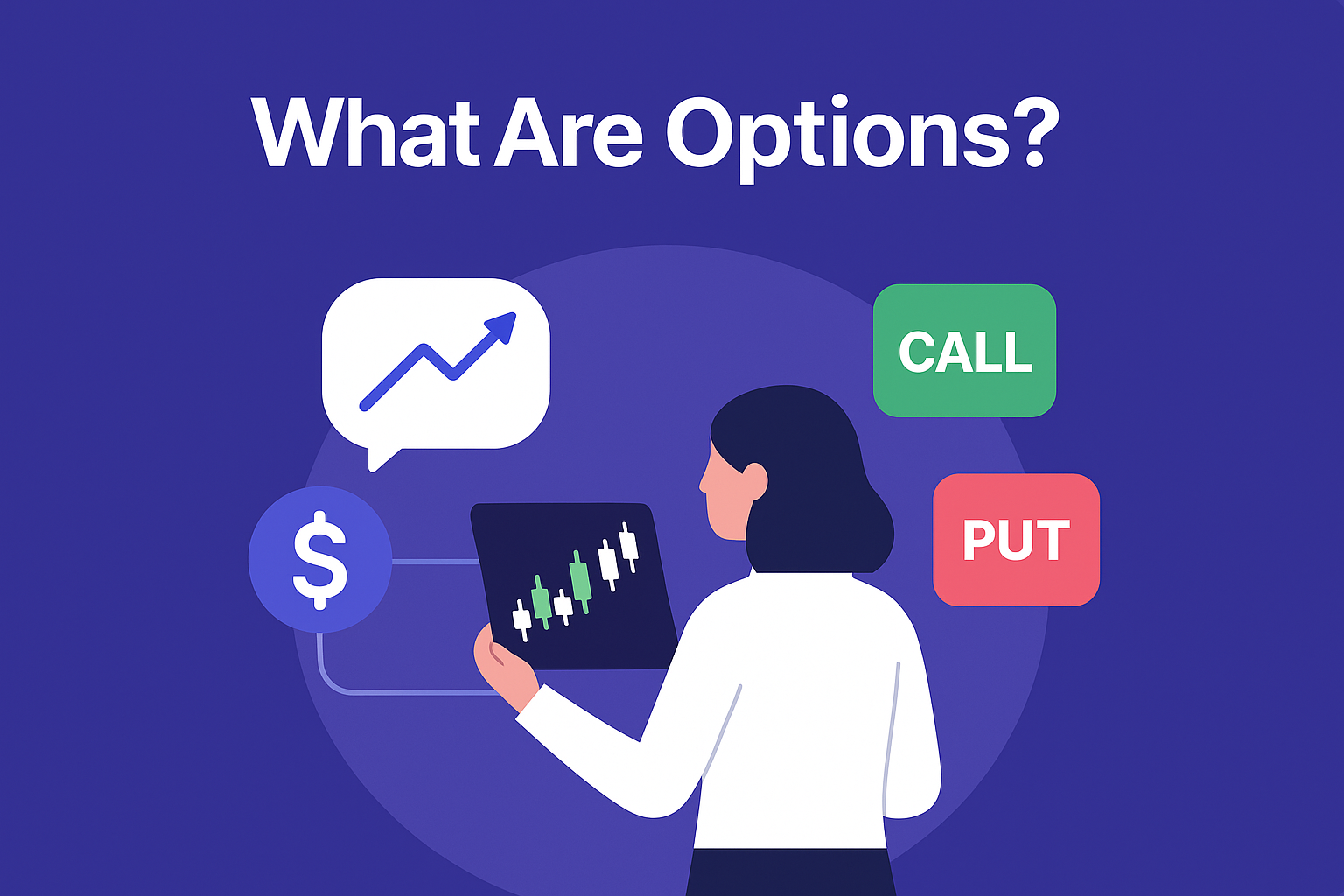Put Options Explained: Profit from Falling Prices and Protect Your Portfolio
Put options are the yin to call options' yang, providing traders with the ability to profit from declining stock prices or protect existing positions from downside risk. Whether you're betting against an overvalued tech stock or hedging your Apple shares before earnings, understanding put options is crucial for any well-rounded options trader.
What Are Put Options?
A put option gives you the right to sell 100 shares of a stock at a specific price (strike price) before expiration. When you buy a put, you're betting the stock will fall below your strike price minus the premium you paid.
Imagine having the right to sell your Tesla shares for $200 each, even if the stock crashes to $150. That's the power of put options – they provide a safety net or profit opportunity when markets decline.
Put Option Mechanics
Strike Price: The price at which you can sell the stock. If Meta trades at $300 and you buy a $280 put, you can sell Meta at $280 regardless of where it actually trades.
Expiration Date: Your deadline to exercise the option. Like calls, puts expire on Fridays with various timeframes available.
Premium: What you pay for the put option. This represents your maximum risk when buying puts.
Intrinsic Value: How much the put is worth if exercised immediately. A Meta $280 put has $20 intrinsic value if Meta trades at $260.
Time Value: The additional premium beyond intrinsic value that reflects remaining time until expiration.
Two Primary Uses for Put Options
1. Speculative Bearish Plays
When you believe a stock will decline, buying puts amplifies your profit potential compared to shorting stock. If you think Apple is overvalued before earnings, buying puts lets you profit from any decline while limiting your risk to the premium paid.
2. Portfolio Insurance
Put options serve as insurance for your stock holdings. Own 500 shares of Amazon? Buying 5 put contracts protects against major losses while letting you keep your shares and participate in any upside.
Real-World Put Option Examples
Tesla Earnings Protection Trade
You own 100 shares of Tesla at $210, but you're nervous about upcoming earnings volatility. Tesla currently trades at $205, and you buy a $200 put expiring after earnings for $6.50 ($650 total).
Scenario 1: Tesla drops to $180 after disappointing earnings
- Your put is worth $20 per share ($200 - $180)
- Put profit: $1,350 ($2,000 - $650 cost)
- Stock loss: $2,500 (from $210 to $180)
- Net loss: $1,150 instead of $3,000 without protection
Scenario 2: Tesla rises to $230 on good news
- Your put expires worthless (-$650)
- Stock gain: $2,000 (from $210 to $230)
- Net gain: $1,350
Speculative Put Play on Meta
Meta trades at $320, but you believe their metaverse spending will disappoint investors. You buy a $300 put expiring in 45 days for $8.50 ($850 total).
If Meta drops to $275 by expiration:
- Put value: $25 per share ($300 - $275)
- Profit: $1,650 ($2,500 - $850 cost)
- Return: 194%
If Meta stays above $300, you lose the entire $850 premium.
Advanced Put Strategies
In-the-Money Puts: Higher cost but better odds of profit. Buying Apple $180 puts when Apple trades at $175 costs more but has intrinsic value built in.
Out-of-the-Money Puts: Cheaper but require larger moves. Those Apple $160 puts might cost only $2, but Apple needs to fall significantly for profitability.
LEAPS Puts: Long-term puts perfect for portfolio insurance or long-term bearish theses. Great for protecting growth stock positions during uncertain market periods.
Put Options vs. Shorting Stock
Buying puts offers several advantages over shorting stock:
Limited Risk: Maximum loss is the premium paid, while shorting has unlimited loss potential.
No Margin Requirements: Buying puts requires less capital than maintaining a short position.
No Borrowing Costs: Short sellers pay borrowing fees; put buyers don't.
Dividend Protection: Short sellers owe dividends; put buyers don't.
For a bearish play on Google from $140 to $120:
- Shorting 100 shares: $14,000 margin requirement, $2,000 profit
- Buying $130 puts for $4: $400 investment, potential $1,600 profit
Time Decay and Put Options
Like calls, puts suffer from time decay (theta). However, puts can sometimes gain time value during market stress as demand for portfolio protection increases.
This is why many traders prefer puts with 45-60 days to expiration, providing enough time for their bearish thesis to develop while managing time decay risk.
Common Put Option Mistakes
Buying Puts in Bull Markets: Fighting the overall trend rarely works. Even overvalued stocks can stay overvalued longer than expected.
Ignoring Implied Volatility: Buying expensive puts before earnings often leads to losses from volatility crush, even if you're right about direction.
Poor Timing: Buying puts too close to expiration turns trades into lottery tickets rather than strategic positions.
No Hedging Plan: Using puts for protection without a clear strategy for when to exit or roll positions.
Selecting the Right Puts
High-Quality Underlyings: Focus on liquid options with tight spreads. Apple, Tesla, Microsoft, and SPY offer excellent put option liquidity.
Strike Selection: For speculation, slightly out-of-the-money puts offer good risk-reward. For protection, choose strikes that provide meaningful coverage.
Time Frame: Give yourself adequate time for the move to develop, especially for speculative plays.
Put Option Portfolio Applications
Market Hedging: Buy SPY or QQQ puts to protect entire portfolios during uncertain periods.
Sector Protection: Use sector ETF puts (XLK for tech, XLF for financials) to hedge specific exposures.
Individual Stock Insurance: Protect concentrated positions in stocks like Amazon or Google with targeted put purchases.
Key Takeaways
- Put options provide profitable exposure to declining prices with limited downside risk
- Puts serve dual purposes: speculation and portfolio protection
- Buying puts offers advantages over shorting stocks, including limited risk and no margin requirements
- Time decay affects puts, making timing and duration crucial considerations
- Liquid options on major stocks and ETFs provide the best trading opportunities
- Successful put trading requires understanding both directional movement and volatility dynamics
Frequently Asked Questions
Q: Can I lose more money than I invest in put options? A: When buying puts, your maximum loss is limited to the premium paid. However, selling puts can involve significant risk.
Q: Should I buy puts to hedge my entire portfolio? A: Consider index puts (SPY, QQQ) for broad protection, or sector-specific puts for targeted hedging based on your holdings.
Q: When should I sell my profitable puts? A: Many traders take profits at 50-100% gains rather than holding for maximum theoretical value, especially as expiration approaches.
Q: Are puts more expensive during market declines? A: Yes, implied volatility typically increases during market stress, making puts more expensive when you might want them most.
Q: Can I use puts in my retirement account? A: Most brokers allow put buying in IRAs since it's considered a lower-risk strategy compared to selling options.
Master Your Put Option Strategy
Tracking put option performance across protection and speculation strategies requires sophisticated analysis. Understanding which timeframes and strikes work best for your trading style can significantly improve your results.
Sign Up for OptionTracker.app to monitor your put positions, analyze hedging effectiveness, and optimize your portfolio protection strategies with professional-grade tools.
Stay informed about market volatility and put option opportunities. Join Our Newsletter for weekly insights on defensive strategies and market protection techniques.
Disclaimer: Options trading involves substantial risk and is not suitable for all investors. Put options can expire worthless, resulting in total loss of premium paid. Past performance does not guarantee future results. Please consider your investment objectives and risk tolerance before trading options. This content is for educational purposes only and should not be considered personalized investment advice.


